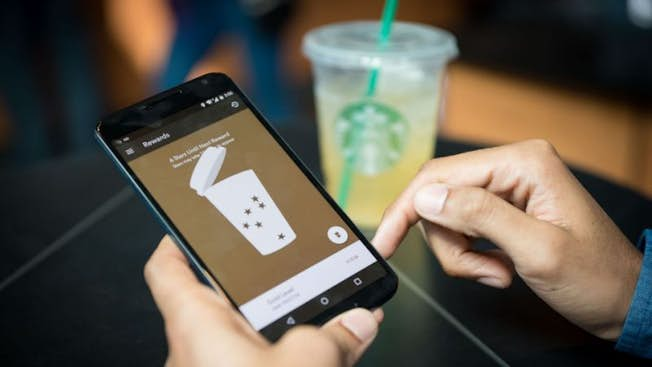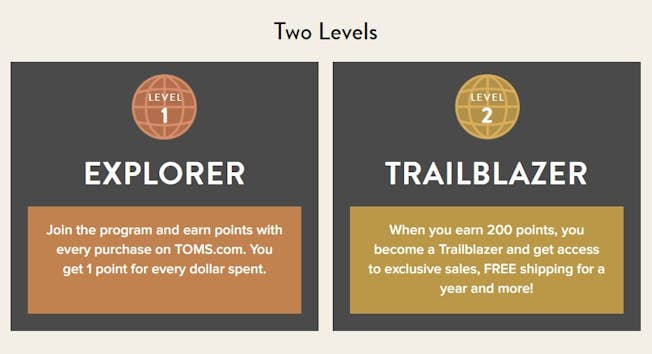Sep 23, 2019
The Enduring Marketing Power of Customer Loyalty Schemes
“You don’t earn loyalty in a day. You earn loyalty day-by-day.” Jeffrey Gitomer, author and business expert
The customer loyalty scheme is not a new marketing concept: researchers believe that it dates back to the 1700s, when American retailers would offer their customers copper tokens to redeem on future purchases.
Naturally, the customer loyalty scheme has evolved enormously over time—but at its core, the model remains the same—offering people a level of reward and exclusivity that incentivizes them to make repeat purchases, becoming brand advocates in the process. And, in today’s world, they’re almost everywhere.
A cross-channel, cross-industry market, loyalty scheme allows customers to accrue points or incentives from just about every touchpoint or experience imaginable from in-store transactions, buying from partner brands, fueling your car, going to the cinema, traveling on ferries...the list goes on.
In an age where consumers are overwhelmed by choice, driving customer loyalty is essential to long-term growth and success. As such, droves of notable brands, both big and small, across sectors, are investing in a new breed of loyalty program, with many seeing a healthy return on investment (ROI). And in the digital age, the possibilities seem even more limitless.
An ever-growing range of digital touch points including mobile apps, social media platforms, online shopping experiences, and dedicated customer portals have expanded the industry, propelling the concept of loyalty schemes into an exciting new era.
Here we explore the ever-evolving marketing power of customer loyalty schemes and look at three innovative modern examples.
Customer loyalty: essential insights
The rapid evolution of digital technology means that when it comes to creating customer loyalty schemes, today’s marketers have a wealth of dynamic platforms, touchpoints, and tools at their disposal.
These three insights alone outline the importance of customer loyalty programs in the digital era:
- 69% of consumers choose brands based on the ability to earn customer loyalty or rewards program points.
- 57.4% of customers join loyalty schemes to save money, and 37.5% of customers commit to retail programs to earn rewards.
- 83% of consumers confirm that loyalty programs make them more likely to continue engaging with certain brands.
The new age of the customer loyalty scheme
Air miles and in-store rewards are two long-standing loyalty marketing mediums that brands still use in today's retail landscape. But, with innovative customer portals and mobile having changed the playing field, we’ve seen an increase in loyalty scheme investment.
Advancements in personalization mean that brands looking to foster loyalty send you tailored offers or incentives on your birthday, and mobile apps like Stocard allow you to manage all of your loyalty memberships from one single platform.
An industry report from Gartner and Retail Dive showed a growth in loyalty scheme investment across sectors, with experts projecting that the market will be worth $201 billion (180 billion Euros) by 2022.
The wealth of digital capabilities readily available in the digital age has encouraged brands to get innovative with their rewards programs—sparking the new age of customer loyalty. These three very different but equally effective rewards programs are a testament to the evolution of the field.
1. Starbucks Rewards

By 2020, the mobile app market is predicted to be worth $188.9 billion. And, it seems that mobile devices have taken over the population.
App-based loyalty programs are in widespread use, and Starbucks Rewards has been one of the pioneering schemes since its introduction in 2015 (as it evolved from a wallet-based, or physical, loyalty card).
The mobile-centric nature of Starbucks Rewards not only streamlines the food & beverage purchasing journey but by incentivizing its customers by buying directly through the app, Starbucks has increased engagement (and collected valuable data) while driving loyalty.
Boasting the perfect storm of superior customer experience (CX), an engaging mobile app design, and seamless integration with other apps and services including Spotify (an innovative experience that allows customers to save songs they’ve heard in-store to their Spotify accounts), Starbucks Rewards is still leading the way in loyalty programs.
As a result of its mobile-based customer loyalty initiative, Starbucks enjoyed significant growth in 2018, accounting for around 39% of the chain’s overall sales. Moreover, recent studies show that Starbucks is the most frequently-used (48%) loyalty rewards app among a list of big restaurant chains.
2. TOMS One For One
A customer loyalty scheme that transcends the traditional 'buy and get personal rewards model', the ground-breaking brand initiative by shoe brand TOMS is based on helping others.
The One for One loyalty program taps into the ever-popular global philanthropic spirit by incentivizing its customers to donate shoes, eyewear, water, and birth kits to communities in 70 countries every time they make a purchase.
Launched in 2012, the brand has retained its philanthropic roots while evolving its loyalty scheme which is now named, TOMS Passport Rewards.

The two-tiered scheme gives its customers access to a host of instant benefits including early access to products and free shipping while offering an incentive to progress to ‘Trailblazer’ status and enjoy a wider choice of exclusive member’s benefits.
81% of millennials want brands to go beyond generating profit alone, and serve as drivers of change while becoming active in their communities. By evolving its original concept of encouraging change and offering its customers additional incentives across a wider range of digital touchpoints, TOMS has tapped into the new socially-conscious consumer mindset while competing with its rivals.
Since its launch, the TOMS Passport Rewards new loyalty scheme has been incredibly well received, earning a host of positive reviews from consumers around the world.
By promoting selflessness, global change, and an unwavering commitment to its brand values, TOMS shoes has flipped the concept of customer loyalty schemes on its head, helping the clothing company stand out in a saturated market, boosting its brand awareness while helping to enhance the lives of millions of people the world over.
3. Nordstrom’s The Nordy Club
Last year, the high-end American department store chain Nordstrom reimagined its loyalty scheme to place a greater focus on personalization and attract a wider audience—resulting in a concept called The Nordy Club.
After becoming a Nordy Club member, customers can create a personal portrait, customizing their style profiles to receive highly-tailored offers, tips, suggestions, and incentives that will help them progress onto the next tier or level.
Pushing the envelope even further in terms of personalization, The Nordy Club rewards exceptional customer loyalty with personalized experiences including house visits from the brand’s best in-house stylists.
Due to continual growth of Nordstrom’s cutting-edge loyalty scheme, the brand’s loyalty scheme-based profits have risen by 20%, as explained by co-president and director, Erik Nordstrom:
“Really, our loyalty program is a key part of our brand. And it’s something that’s been vital to us for quite some time. Five years ago, 35% of our business was done through our loyalty program. It is now at 55% and growing rapidly.” Erik Nordstrom
Privacy concerns
With growth comes challenge—the customer loyalty market is no exception. The introduction of GDPR in 2018, ongoing data scandals, and general consumer pushback concerning their personal data means that privacy has become a common roadblock.
As brands strive to create a deeper level of personalization in their loyalty schemes, privacy concerns have been raised.
Recently, US communications company, Verizon, has come under scrutiny with its loyalty scheme Verizon Up. To reap the rewards of its credit-based loyalty system, customers have to enroll in Verizon Selects—a platform that tracks and traces a considerable amount of your personal data.
Customer loyalty schemes rely on consumer data to create a level of user experience (UX) and personal value that builds consumer relationships and results in repeat custom—but, without taking an ethical approach and being 100% transparent with potential loyalty subscribers, it’s unlikely that your initiative will be a sustainable success.
“The keys to brand success are self-definition, transparency, authenticity and accountability.” Simon Mainwaring, brand futurist and keynote speaker
Despite recent privacy concerns, digitally-driven customer loyalty schemes make powerful customer retention tools.
As demonstrated by Starbucks, TOMS, and Nordstrom, today’s loyalty schemes are more than about earning points alone. By streamlining the customer experience with digital technology and using all of your available touchpoints in a way that offers a high level of exclusivity as well as a deep level of personal value, you’ll be on your way to success.
To win at the loyalty scheme game, you need to strike the perfect balance between personalization and innovation. By doing so, you’ll form the foundations of a successful customer loyalty scheme—the rest will boil down to your own creativity. The sky's the limit!
Related
Upgrade to Power Membership to continue
your access to thousands of articles, toolkits, podcasts, lessons and much much more.
Become a Power Member- Login
- View Courses
- - - -
- Courses
- Resources
- - - -
- My Account
- Change Password
- Logout






